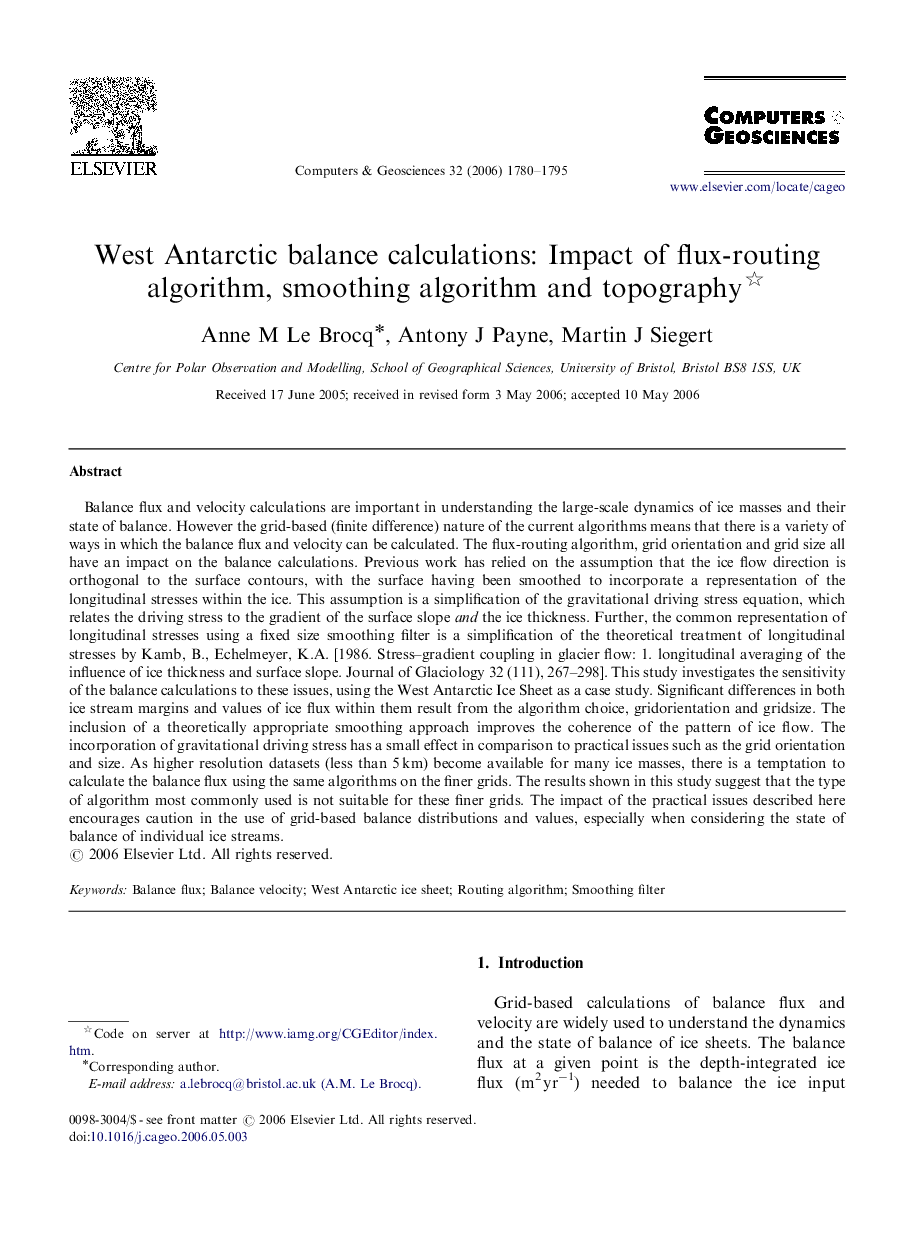| Article ID | Journal | Published Year | Pages | File Type |
|---|---|---|---|---|
| 508514 | Computers & Geosciences | 2006 | 16 Pages |
Balance flux and velocity calculations are important in understanding the large-scale dynamics of ice masses and their state of balance. However the grid-based (finite difference) nature of the current algorithms means that there is a variety of ways in which the balance flux and velocity can be calculated. The flux-routing algorithm, grid orientation and grid size all have an impact on the balance calculations. Previous work has relied on the assumption that the ice flow direction is orthogonal to the surface contours, with the surface having been smoothed to incorporate a representation of the longitudinal stresses within the ice. This assumption is a simplification of the gravitational driving stress equation, which relates the driving stress to the gradient of the surface slope and the ice thickness. Further, the common representation of longitudinal stresses using a fixed size smoothing filter is a simplification of the theoretical treatment of longitudinal stresses by Kamb, B., Echelmeyer, K.A. [1986. Stress–gradient coupling in glacier flow: 1. longitudinal averaging of the influence of ice thickness and surface slope. Journal of Glaciology 32 (111), 267–298]. This study investigates the sensitivity of the balance calculations to these issues, using the West Antarctic Ice Sheet as a case study. Significant differences in both ice stream margins and values of ice flux within them result from the algorithm choice, gridorientation and gridsize. The inclusion of a theoretically appropriate smoothing approach improves the coherence of the pattern of ice flow. The incorporation of gravitational driving stress has a small effect in comparison to practical issues such as the grid orientation and size. As higher resolution datasets (less than 5 km) become available for many ice masses, there is a temptation to calculate the balance flux using the same algorithms on the finer grids. The results shown in this study suggest that the type of algorithm most commonly used is not suitable for these finer grids. The impact of the practical issues described here encourages caution in the use of grid-based balance distributions and values, especially when considering the state of balance of individual ice streams.
